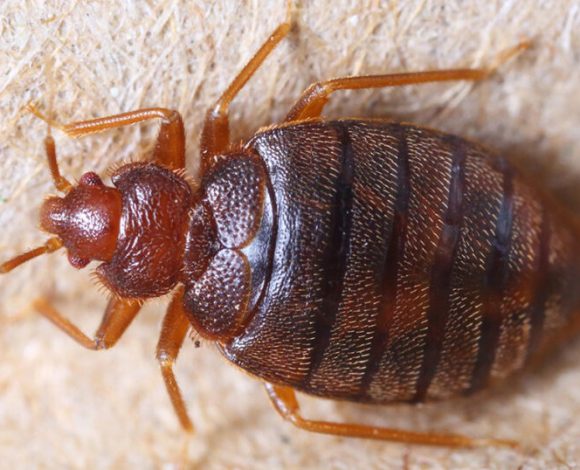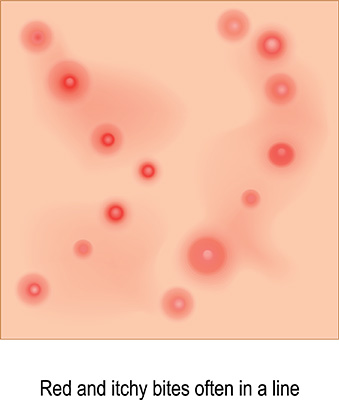Identifying bed bugs in NZ
Bed bugs in NZ are one of the most irritating pests to have at your property. But not all bugs that end up in sheets are bed begs. In this guide, we’ll help you with identifying bed bugs in NZ and what to do if you find them.
What are bed bugs?
Bed bugs are small bugs from the genus Cimex. Their main source of food is blood which they will eat from warm-blooded animals like cats and dogs as well as humans. Unlike ants and many other bugs, they don’t have typical nests but instead, congregate together to form an area where they live. This small area tends to be within a perimeter of few metres but they can travel up to 30 metres to find food if scarce.
What do bed bugs in NZ look like?
There are two main types of Bed bugs: The Common bed bug and the Tropical bed bug.
Common bed bugs are flat, and have six legs and two antennae. Eggs hatch 7-10 days after they’re laid. Young common bed bugs are small and a cream or translucent colour. These are difficult to see with the naked eye. Adults, on the other hand, can grow to around 10mm. They have a wide body with that tapers into a u-shape near the head. After eating blood, common bed bugs gain a reddish brown appearance.

Tropical bed bugs look similar to the common bed bug. As the name suggests, they live in tropical climates so are less common around the world compared to the common bed bug. The tropical bed bug has less of a u-shaped pronotum (the “neck” area). As they are less common, not as much is known about them. However, research suggests that they lay fewer eggs but also develop faster.

Both kinds of bed bugs can be found around New Zealand. Fortunately, the same treatment plan works for either type.
What do NZ bed bug bites look like?
Since a small infestation of bed bugs may be hard to find, you might not notice it right away. In these cases, be on the lookout for Bed bug bites. They leave a specific mark that you should watch out for. The bites are small, red, and itchy. They also tend to form in a line pattern.

While some people have an allergic reaction to bed bugs (generally from the saliva), fortunately, there’s no evidence that they transmit disease. Nevertheless, they can be extremely irritating and are a major pest that can be challenging to remove.
Other signs of bed bugs
Some people have no noticeable reaction to bed bug bites, while others can have an allergic reaction. Besides the bites and seeing the bugs themselves, there are a few other signs you can look for if you suspect bed bugs, including:
- Dark fecal spots on your sheets
- Small blood stains
- A musty odour
- Egg shells or shell skins
What if I don’t see these signs?
If you have bites but the bugs don’t look like this or don’t match this pattern, you may be dealing with a different pest. We recommend getting in touch with your local pest control company to help sort out what you’re dealing with.
How do I sort out bed bugs?
If you do find out that you have bed bugs, you should aim to remove them as quickly as possible. Your best option is to call a professional to help get rid of them. But there are still a few steps you should take yourself to ensure that the treatment takes.
- Treat the problem areas. We highly recommend calling an expert because it’s difficult to find all of the bed bugs on your own. While they’re called “bed bugs”, in NZ they can live in all sorts of places. Common areas include curtains, carpeting, and even in picture frames and around electrical sockets. Use a targeted treatment designed for bed bugs on affected areas and consider sprays as well as fumigation.
- Thoroughly clean the bed and other affected areas. Use a bed bug spray and also toss them in the wash if possible. Hot water (60c or higher) works best, or freezing the items (ideally under -20c) is also effective. Steaming is also a way to get rid of them as the steam will kill them instantly. If you have luggage around, be sure to spray them too as luggage is a common way that bed bugs spread between areas.
- Follow up with increased, heightened cleaning for at least a few months. Wash the sheets and affected areas frequently, more than you normally would. Adding occasional spray treatments doesn’t hurt either and can reduce the chance of them returning. Some pest control companies also offer reduced rates on follow-up reinspections and retreatments and can make sure the bugs are gone.
Call us for help with bed bugs in Southland
If you’re in the Southland region, we can help get rid of bed bugs for you. Our experienced pest control team knows how to identify, find, and remove bed bugs. Give us a call or fill out our contact form below if you’d like a free quote.
